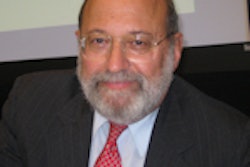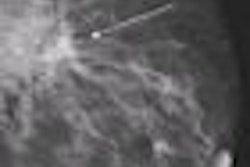MRI helps find hidden cancers even after ultrasound and mammography exams have been performed, according to a study presented at the RSNA meeting last month. What's more, MRI might be useful beyond the high-risk patients for whom it's currently recommended.
The study found that not only does screening with ultrasound in addition to mammography significantly improve the detection of early breast cancer, but that even more early breast cancer can be found when MRI is performed, according to lead researcher Dr. Wendie Berg, Ph.D., breast imaging specialist at American Radiology Services, Johns Hopkins at Green Spring Station, in Lutherville, MD.
The research was part of a three-year screening study on the sensitivity of mammography plus ultrasound, conducted under the auspices of the American College of Radiology Imaging Network (ACRIN) 6666 trial funded by the Avon Foundation and the National Cancer Institute.
What was surprising was that women at intermediate risk, not just high risk, were also found to benefit from MRI.
"Midway through our three-year study, the American Cancer Society released its MRI screening guidelines, which said that MRI was important for high-risk women but that its benefits weren't as defined for women at intermediate risk," Berg said. "We found that MRI does help women in this intermediate category as well, offering significantly greater cancer detection, both by itself and after mammography and ultrasound have been performed. It's a far more sensitive test than any other we can do for this population."
Berg's team studied 612 women (mean age, 55 years) at elevated risk of breast cancer who were enrolled at 14 ACRIN sites. The women underwent baseline screening mammography and ultrasound with follow-up exams at 12 and 24 months, and then a single contrast-enhanced MRI scan at 24 months.
In all, 16 women were diagnosed with breast cancer, with 12 of the cancers categorized as invasive and four as ductal carcinoma in situ (DCIS). Over the course of the study, 50% to 56% of cancers were visualized on mammography. Adding ultrasound allowed detection of 70% to 94% of cancers, and adding MRI allowed detection of additional cancers at their earliest stage, according to Berg.
"Eighty-eight percent of the cancers we found were seen on MRI," she said. "Fifty-six percent more were found when MRI was added to the combination of mammography plus ultrasound."
And these cancers were exactly the ones everyone's trying to find, Berg said: node negative, invasive, and smaller than 1 cm.
In the midst of heated dialogue about when mammography screening should start and how often it should occur, this study provides further clinical information, according to Berg.
"Right now, we have additional tools to bring to bear on the problem of detecting early breast cancer," she said. "Ultrasound is one of them, and it finds 30% more cancers than mammography alone. MRI finds even more than that. So women are now in a position where they can know more about their own risk factors and options available to them for increased early cancer detection."
Adding more imaging tests does have its drawbacks, including the risk of more false-positive findings, according to Berg. In this study, 14% of the women had short-term follow-up, and approximately 7.7% had to have a biopsy because of the MRI. But a quarter of those biopsies found cancer.
"Women should be aware of the increased potential of undergoing an unnecessary biopsy as a result of supplemental screening," she said. "But we hope this study motivates women and their doctors to learn more about their risk factors and to consider supplemental screening in addition to mammography where indicated."
By Kate Madden Yee
AuntMinnie.com staff writer
January 5, 2010
Related Reading
Nearly half of women decline breast MRI, December 30, 2009
Rotating breast cancer tests helps high-risk women, December 15, 2008
Getting paid for breast MRI screening -- It's a jungle out there, September 2, 2008
Breast MRI gains momentum for screening high-risk women, September 2, 2008
Combined breast screening provides best survival for BRCA1 mutation carriers, February 26, 2008
Copyright © 2010 AuntMinnie.com




















